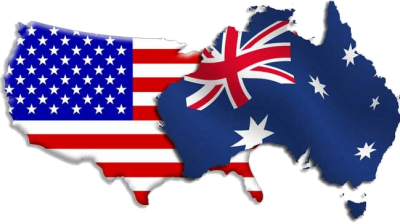Flawed Alliances and the “Pivot to Asia”: Australia, the US and Trumpism

Politics can be a deliciously self-defeating field. For the US-Australian alliance, one born out of desperate insecurity on the part of Canberra, a dramatic change in the White House was always going to cause a shudder. A Clinton presidency was presumed to be inevitable and, on taking place, a no-fuss affair, one which was to continue President Barack Obama’s “pivot” towards the Asia Pacific, and against China.
This has made a satrap Australia vulnerable to the grand political designs of the United States. Caught in the cross hairs of conflict, Canberra can do its little bit to disentangle itself from the overly enthusiastic eye of Washington in the region while maintaining a merry dance with China.
That aspect has been something of a dream. Instead of maintaining a degree of sobriety in the matter, various local commentators and policy wonks were hoping that Australia would, alongside the United States, be able to contain China’s belligerence. The large question was how best to do so.
In July this year, the opposition Labor’s Defence spokesman Stephen Conroy decided to stoke the fires by insisting that China had been shown by the International Court of Justice to be a regional bully boy. On ABC radio, he observed that China had been “engaged in an aggressive, at times, bullying performance, and has now been called out by the international court.”
Conroy’s hawkish solution was simple. “Australia should authorise its forces to both sail and fly over the areas of the South China Sea.”[1] This would at least reassure other powers that the “Freedom of Navigations in and around the South China Sea” could be affirmed.
The Prime Minister, Malcolm Turnbull, rebuked Conroy by suggesting that he was “steaming in a direction all of his own. Everyone else in the region is calling for calm and consideration.” Foreign Minister Julie Bishop scoldingly told the Senator that he was “urging an escalation in tensions.”
The stomping victory of Donald Trump now sharpens the belligerent context, throwing such engagements into sharper relief. Unilateralism offers a vast bag of unpredictable goodies, and it was the sort of bag that was providing Australia’s political classes with discomfort.
On both sides of the aisle, the members of parliament were visibly troubled about the US election result, with only government backbencher and Trump enthusiast George Christensen thrilled at the outcome. Never the sharpest tool in the box, Christensen insisted that this was the sort of victory that could only be good.
The others did not fare so positively. Opposition leader Bill Shorten had already pushed himself into hot water by calling Trump “barking mad”, madness he would have to contend with in future. But he, along with many Australian political figures, has been as much a Trumpist at stages as the man he so roundly condemned.
Australian politicians, in truth, have been mimicking the Trump doctrine of Fortress America for years, building borders they hope will be impervious to the arrival of refugees by sea, and insisting on a form of ugly patriotism that would sit rather well in Trump’s cabinet of wonders. Shorten’s “Australia First” philosophy is another example.
What the local think-tankers and members of the defence fraternity are fretting over is what unruly measure will take place towards the Canberra-Washington alliance. In that sense, such mouthing is typical of satrapy, the view of the desperate on the periphery.Individuals such as Senator Di Natale of the Greens have simply jumped to the conclusion that a Trump presidency posed Australia with a “security threat”.[2] Labor has urged, through its Shadow Foreign Minister Penny Wong, that “we should not be naïve,” only to then prove her very own point by drawing assumptions about Trump. “We need to consider a broader range of scenarios than was previously within contemplation.”[3]
This, of course, should have always been the case for Australia, whose tendency to ape the Washington line in matters of war and security has gone unquestioned except by a few, including the late Malcolm Fraser. The result has seen unquestioned deployments of personnel and material in zones of conflict most Australians would struggle to name. Truly, with the US, all the way, whatever the case of Australia’s immediate neighbours.
Department of Defence Secretary Dennis Richardson has also added his few cents worth, telling an audience at Old Parliament House in Canberra that “the alliance cannot be taken for granted.”[4] It was a relationship that would endure, irrespective of who was in the White House. Ditto former Defence Force chief Angus Houston, who insisted that the US was the “stabilising glue” of the Asia-Pacific region.[5]
If you wanted to get a sense of Australian foreign policy in the past, you would simply have to go to the US State Department’s portfolios. The rest was simple imitation, with the Australian foreign minister being no better than a mid-ranking State Department employee. As with so much with previous assumptions, that book has been thrown out. A Trump victory has given the first necessary jolt to the US-Australian relationship in years, and a needed one at that.
Dr. Binoy Kampmark was a Commonwealth Scholar at Selwyn College, Cambridge. He lectures at RMIT University, Melbourne. Email: [email protected]
Notes

